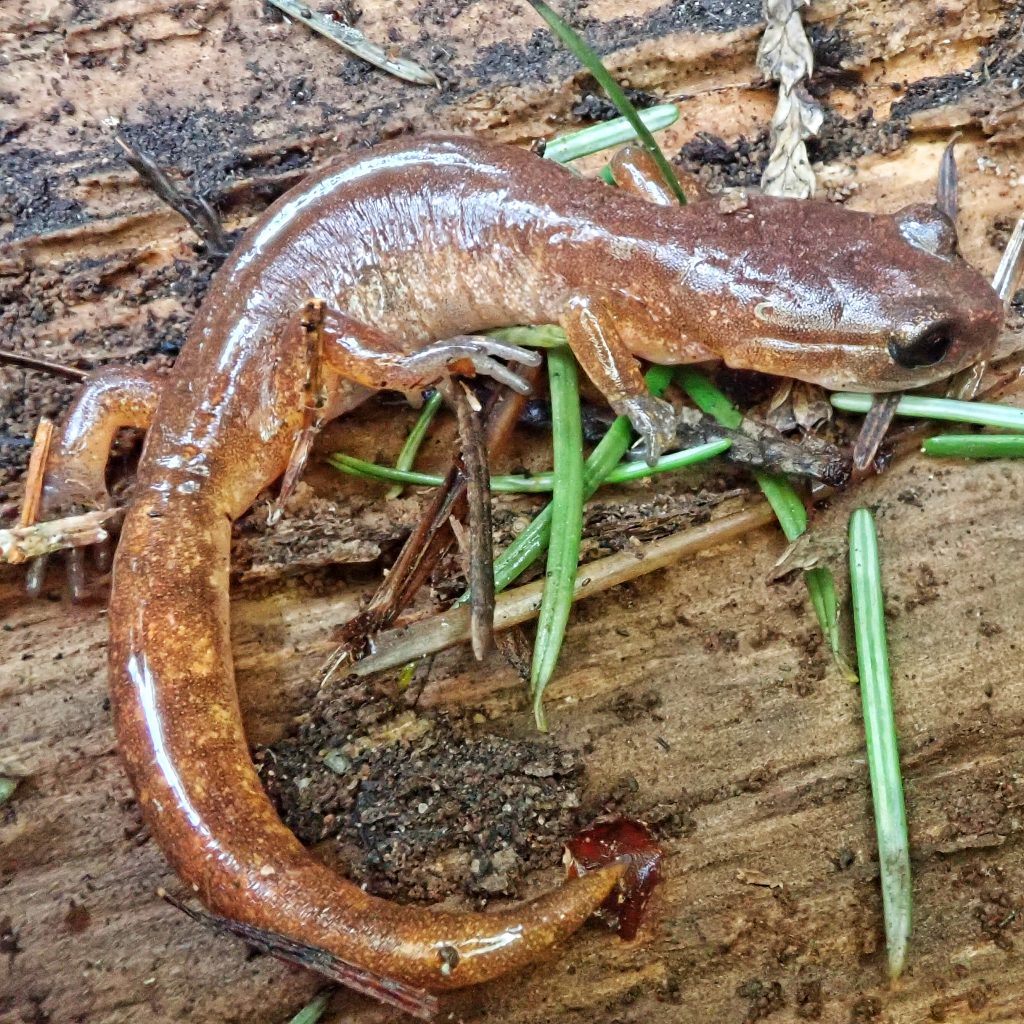
One of my favorite things to do on my rambles is to look under logs, boards, rocks, and even leaves, cardboard, and litter, because you really never know what you might find. But first a caveat; if you flip something put it back! Gently! These are micro habitats that many species depend upon. Imagine a giant ripping the roof off of your house. It would be terrifying. But if he put it back, carefully, you’d be able to continue your life in a fairly normal way, albeit with a story with which to bore your grandkids. If he doesn’t put it back then you’re scrambling for shelter, crowding the neighbors, and very stressed out. These creatures don’t need that additional stress on an already difficult life. Climbing off my soapbox now.
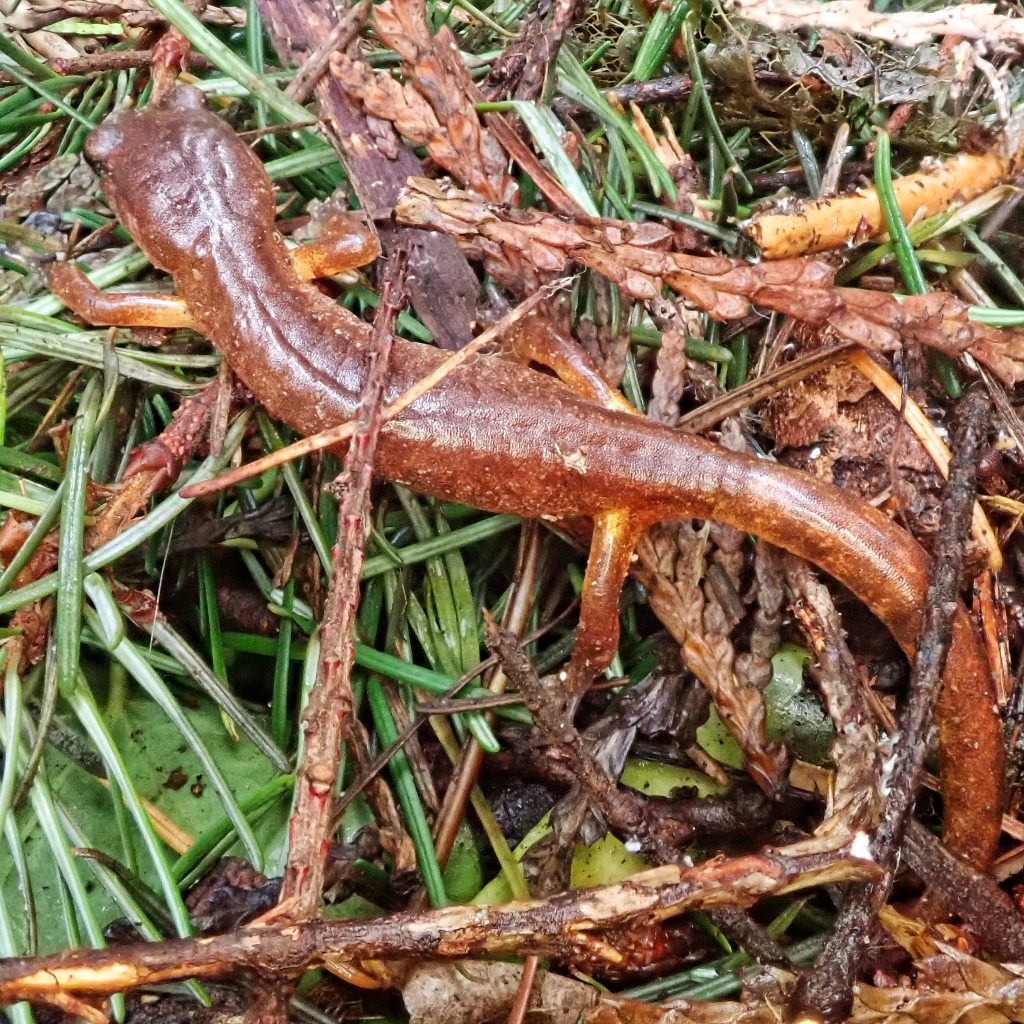
Salamanders are one of the most joy-inducing things I find while flipping, and Ensatina are one of the most common salamanders, although still unusual enough that just one can make my day. They are a terrestrial, forest dwelling species which doesn’t enter water. They still require damp environments, and therefore live their daylight lives underneath moisture trapping barriers.
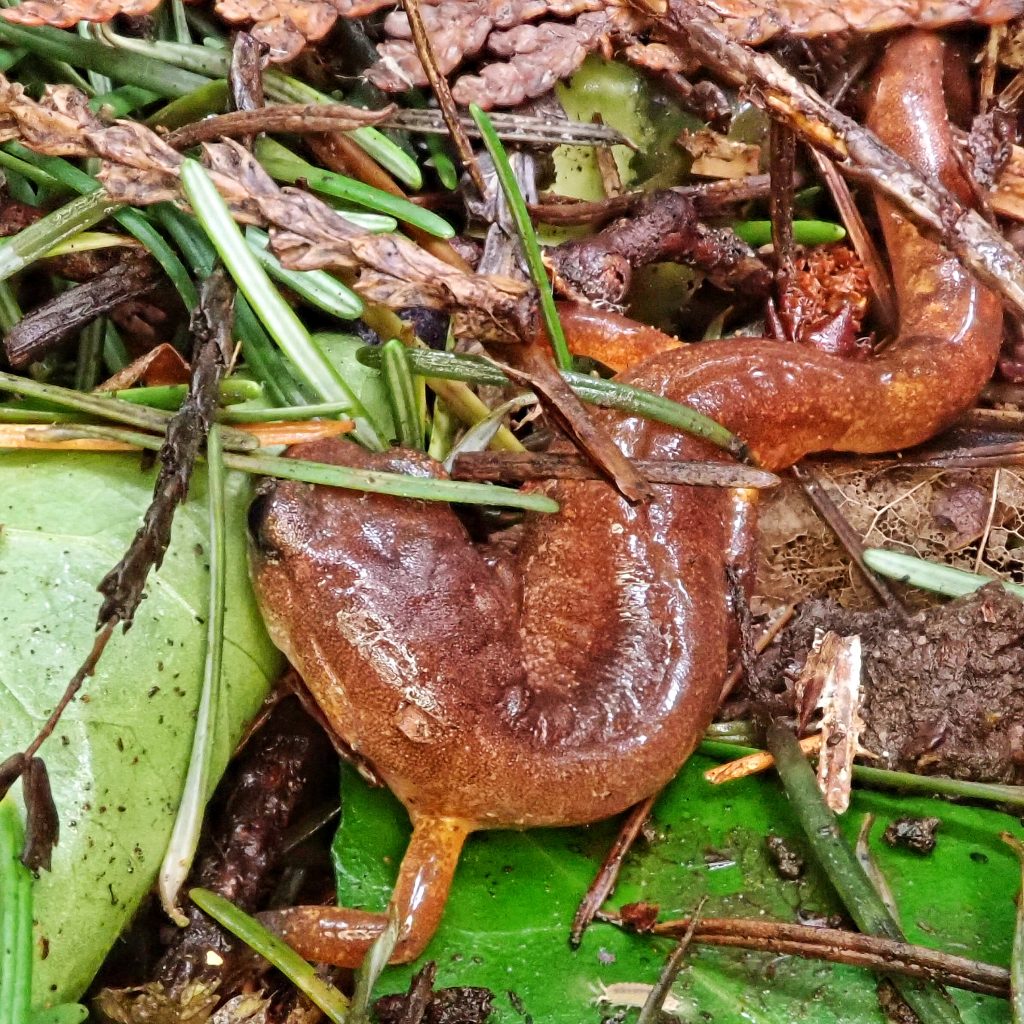
At night during wet weather (they spend the heat of summer and cold of winter deep underground) they become much more active on the surface. In the fall and late winter they spend many a rainy night looking for a mate. Ensatina courtship involves an extended ‘tail straddle dance’, with the female straddling the male’s tail, which ends when the male becomes convinced that the female is receptive and deposits a spermatophore (encapsulated sperm packet) in front of her, and leads her over it. If he is correct she will pick it up with her cloaca (the combination uro-fecal and genital opening common to amphibians, lizards,birds, and most fish). Because the breeding season is lengthy, and Ensatinas don’t lay eggs until late spring/early summer, the female may mate with many suitors. Because they don’t use water for breeding, and lay their eggs in tunnels underground, there is no larval stage for the young, who emerge as tiny salamanders. The female attends the eggs until they hatch in late summer/early fall.
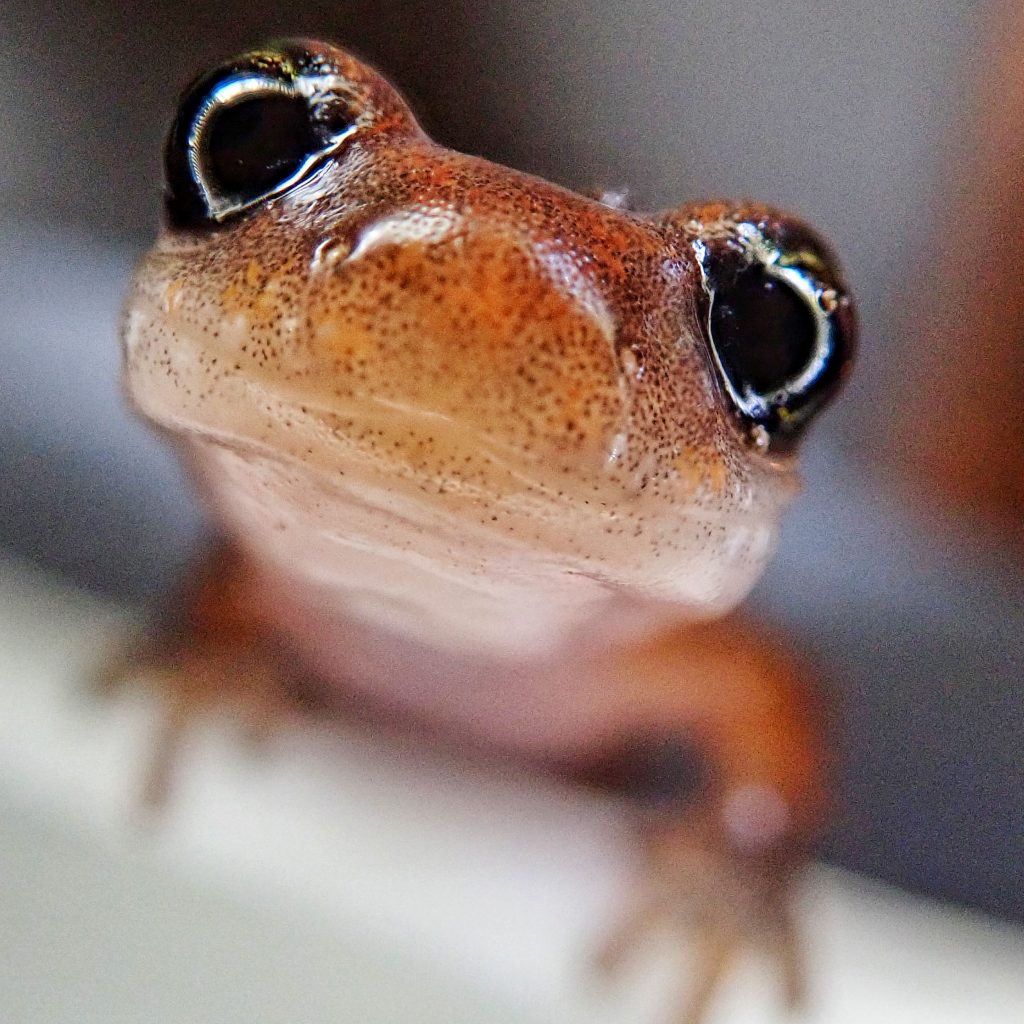
Ensatina eschscholtzii are members of the family Plethidontidae, the lungless salamanders. Lacking lungs, or gills, they respire through their skin, which is why you won’t find them in water. But their lack of dependence on water allowed them to exploit many terrestrial niches, which is why they have the most species of any salamander family.
They diversity and array of subspecies of Ensatina escscholtzii make them very frustrating to taxonomists, and very intriguing to evolutionary biologists, as discussed here.
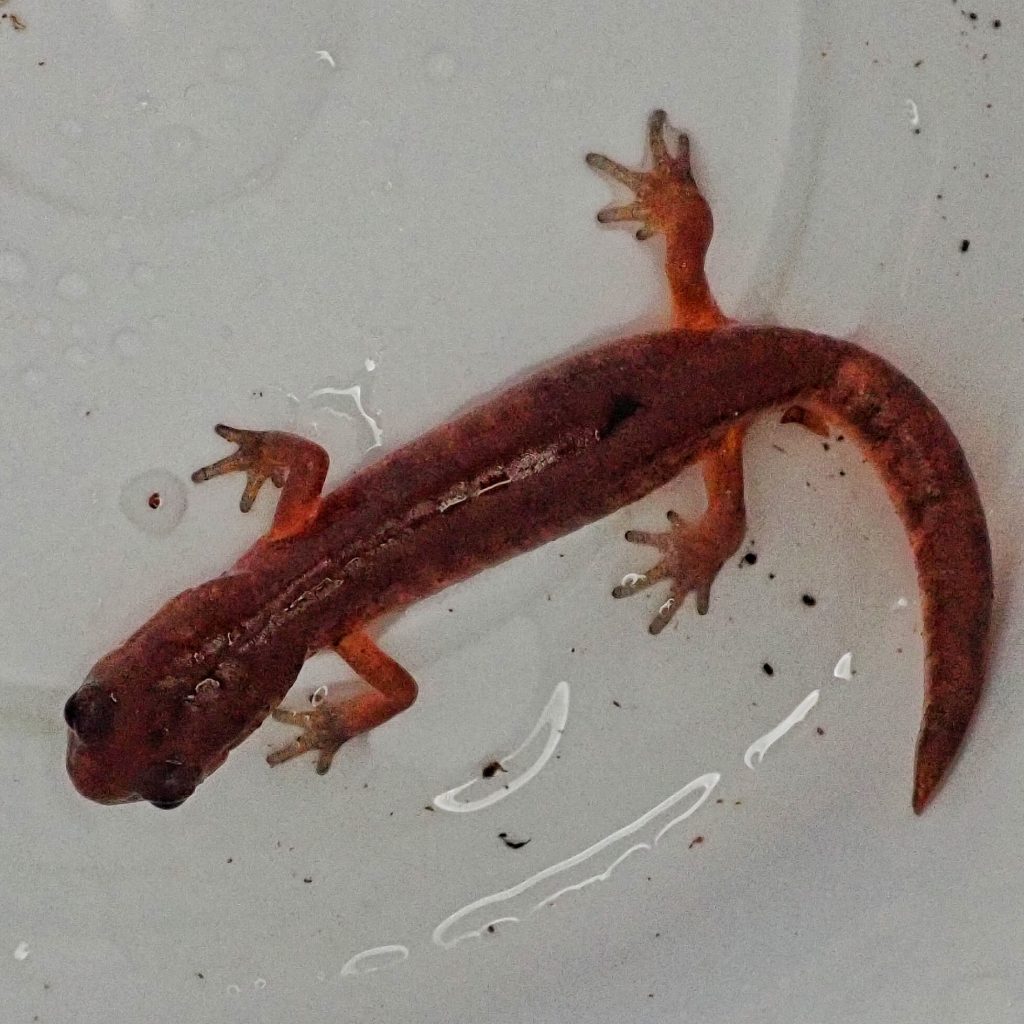
Description– Ensatina are a medium sized salamander (50-60mm snout to vent),have a stocky body and a tail roughly the same length as the body. There is tremendous variation in coloring and pattern, particularly in different locations with their attendant subspecies, but E. eschscholtzii oregonensis (Oregon Ensatina), the most common Ensatina in our region, tends to be a uniform grayish on the back with dull yellow orange speckled sides. The upper legs are almost always yellow orange where they meet the body. Unique among western salamanders is the tail constriction just behind the vent. This allows them to voluntarily drop their tail (called caudal autotomy), which thrashes about and distracts the predator while the Ensatina makes its escape. Tails take up to 2 years to regenerate.
Similar species– Ensatina are the only salamanders in the west which have the tail constriction. If that is not visible the contrasting yellow orange color of the upper legs with the body is also diagnostic.
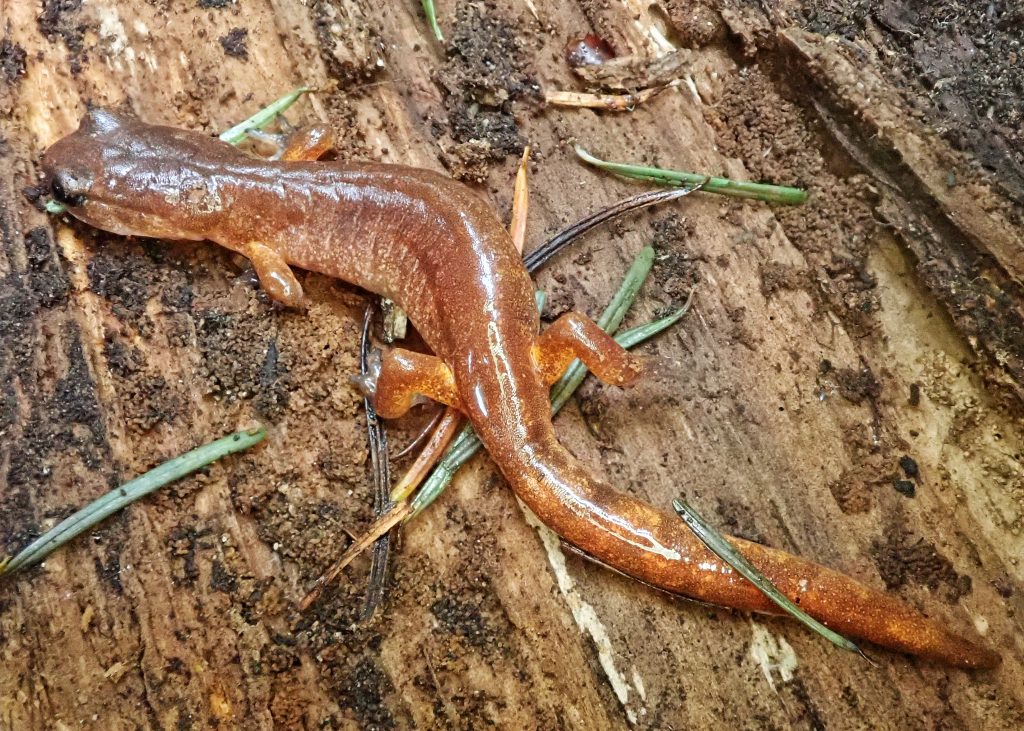
Habitat– Moist forested areas, talus slopes in damp areas, woodpiles and other damp places with abundant woody debris.
Range– West of the Cascades in our region.
Eats– Worms, larvae, and springtails and other tiny prey
Eaten by– Though they do exude toxic substances from glands in their skin and tail, they are still eaten by birds and small mammals. Their are many insects that would prey on the eggs, but the attendance of the mother prevents much of that. But moles and shrews still eat many of them.
Adults active– Year around, except the coldest parts of winter, and the warmest, and most importantly driest, parts of summer.
Etymology of names– Ensatina means ‘small sword’, and references the way the tail is held and brandished at predators. The species epithet eschscholtzii honors JF Eschscholtz, a Baltic-German naturalist who was part of a Russian expedition that explored the Northwest Coast in 1815.
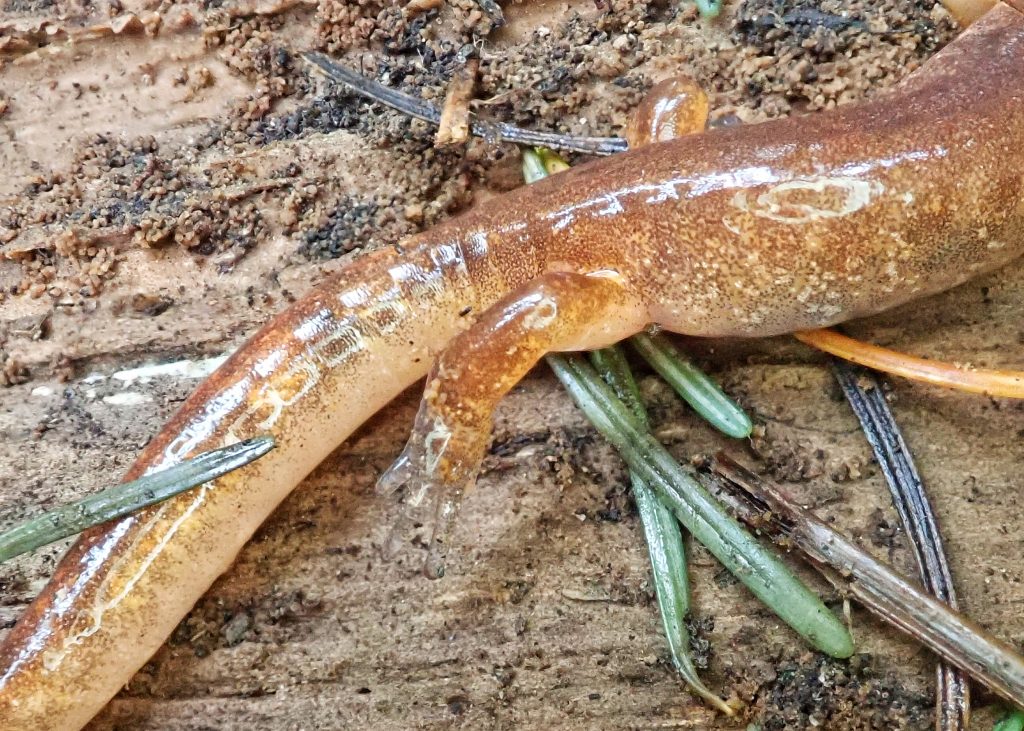
http://www.californiaherps.com/salamanders/pages/e.e.eschscholtzii.html
https://en.m.wikipedia.org/wiki/Ensatina
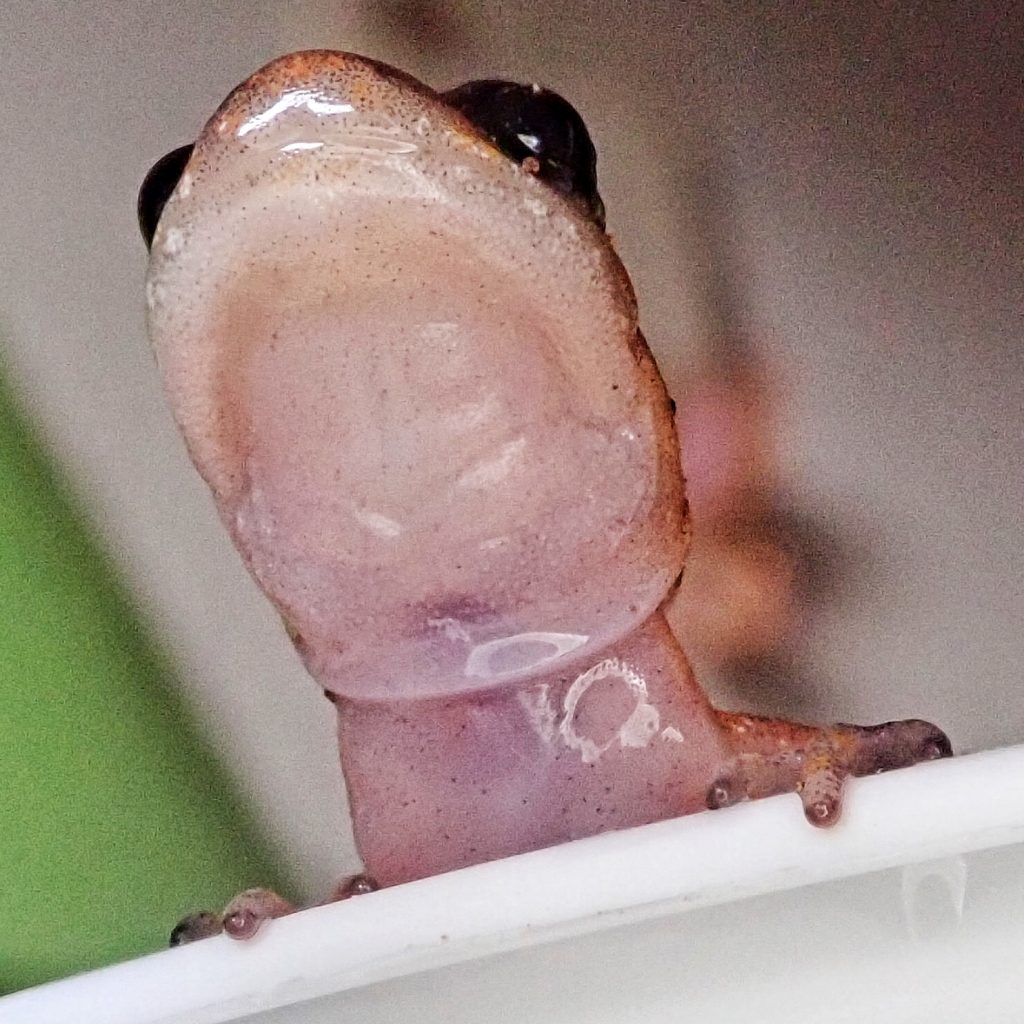
Wonderful profile!! 🤩👍